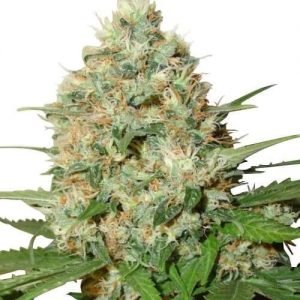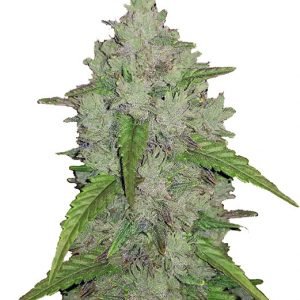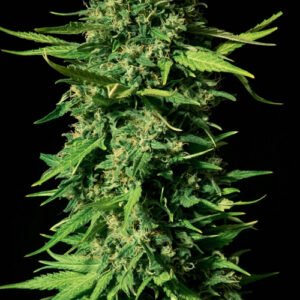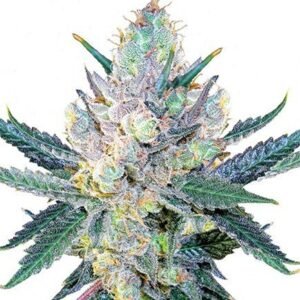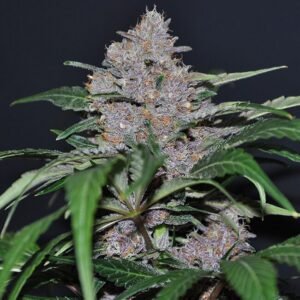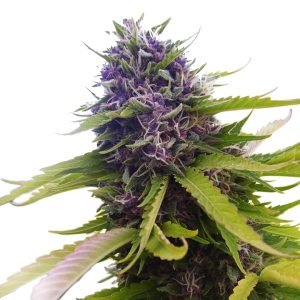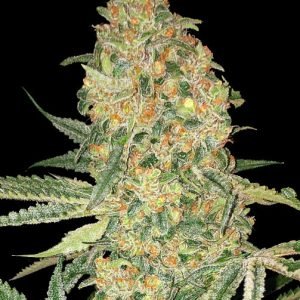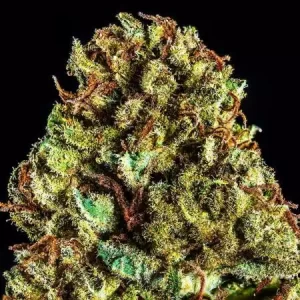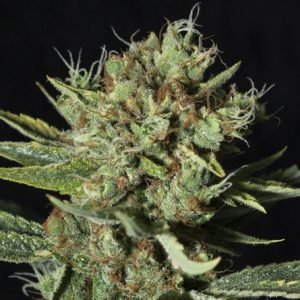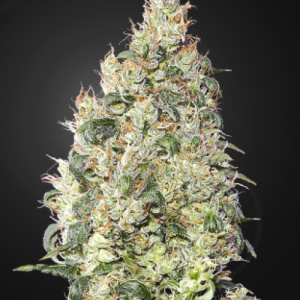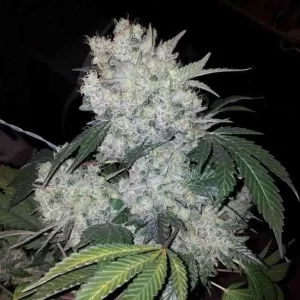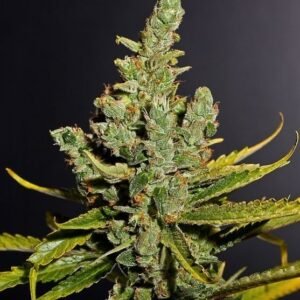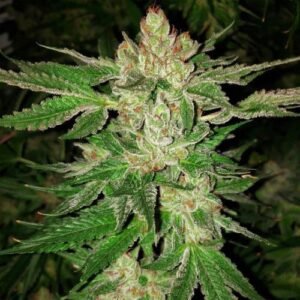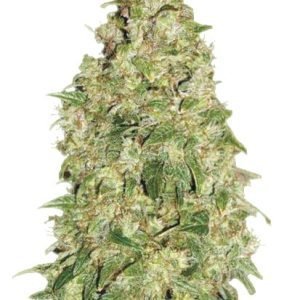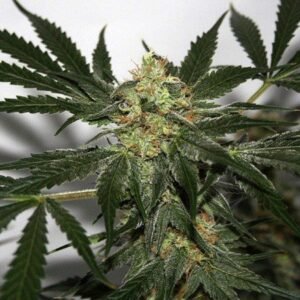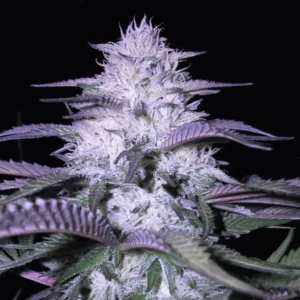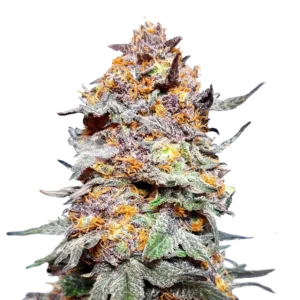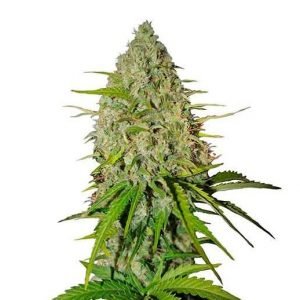
Outdoor vs Indoor Leave a comment
One great thing about growing cannabis is that you can tailor it to your preferences. If you love being outdoors with the sun and grass, you can grow it in your garden. If you prefer technology and indoor comfort, you can grow it indoors. Sometimes, your choice isn’t just about what you like. Some people have to grow indoors because of strict laws, while others grow outdoors due to budget constraints or landlord rules.
Whether you’re new to growing cannabis or have experience in one of these settings, it’s important to weigh the pros and cons. For example, outdoor plants need at least six hours of direct sunlight daily. If your garden faces north or is shaded, meeting this requirement can be tough. But don’t worry; we’ll explain the advantages and disadvantages of growing cannabis outdoors versus indoors below.
Why should you consider cultivating cannabis outdoors? For one, the plant thrives in this setting—over 12,000 years of domestication is proof of that. But the term “outdoors” is vague. There are many different climates and landscapes in this world, and cannabis doesn’t do well in all of them.
Benefits of Outdoor
Getting into outdoor cannabis cultivation has its perks, including natural sunlight, a richer microbial environment, and more space. This combination leads to healthy, robust plants and significant yields.
More Space!
One of the major advantages of outdoor growing is having plenty of space for cannabis plants to thrive. With room for their roots to spread and their canopies to grow, outdoor plants can reach their full genetic potential. When you transplant seedlings into garden beds, they can grow freely without the constraints of pots or containers. This allows them to develop extensive root systems and access ample nutrients and water. While some outdoor growers still use containers to control plant size, having more space means they can use larger pots to cultivate taller and more productive plants.
Additionally, having more space enables the cultivation of a variety of plant species. Many cannabis growers choose to grow companion plants to enhance their garden’s biodiversity, reducing pest damage, controlling the spread of diseases, and preserving soil quality. This “polyculture” approach serves as an effective biological pest control method, reducing the need for chemicals and store-bought pest control products. Common companion plants include white clover, chamomile, dill, and borage.


Sunlight
Outdoor cannabis plants benefit from ample sunlight, which varies based on the local climate. Sunlight, like indoor grow lights, activates chloroplasts in cannabis leaves, driving photosynthesis. However, natural sunlight offers distinct advantages over artificial sources.
Sunlight contains two primary types of ultraviolet (UV) radiation: UVA and UVB. UVA is harmless to plants, while UVB can cause DNA damage. In response to both UV types, plants produce protective resin layers containing compounds like cannabinoids and terpenes. Exposure to this radiation can enhance the effects, aroma, and flavor of the buds.
Diverse Soil Life
Outdoor garden beds support a diverse ecosystem. Establishing and mulching garden beds while following no-till practices fosters a thriving soil food web. This web includes bacteria, fungi, protozoa, nematodes, arthropods, and worms, working together to recycle nutrients from organic matter for plants.
Certain bacteria and fungi form symbiotic relationships with plant roots, exchanging minerals for sugars. Besides nutrient benefits, a healthy soil food web improves soil structure. Mycelial threads and bacterial biofilms create soil aggregates, preventing erosion, while worms enhance aeration and drainage through their tunneling.
Cost-Efficiency
Growing cannabis outdoors can significantly reduce startup costs, especially with a minimalist approach. While items like greenhouses, polytunnels, and irrigation systems can be expensive, creating a no-dig bed for impressive harvests only requires a few bags of compost and cardboard sheets. Even in regions with short growing seasons, this technique can succeed with the right genetics.
Want access to our recommended Seed Banks? Go to CG Australia for a variety of quality Cannabis seeds shipped discreetly or look at Sacred Seeds for more strains.
Disadvantages of Outdoor
Outdoor growing has its challenges, from minor difficulties to potential crop failures. Let’s look at some common problems faced by outdoor cannabis growers:
Pest Pressure
Similar to vegetable gardening, outdoor cannabis cultivation can attract pests like slugs, aphids, and nematodes. These pests can harm your plants, so it’s essential to learn how to protect your crop from caterpillars, spider mites, whiteflies, and other invaders.
Adverse Weather
Outdoor cannabis plants are vulnerable to various weather conditions. Strong winds can damage branches and stems, heavy rains can lead to root rot and increase disease risks during flowering. Excessive heat and drought can cause under watering and wilting, while late spring and early autumn frosts can be fatal.
Unsuitable Climates
In regions with northern latitudes, outdoor growing can be challenging due to a shorter growing season and frequent rainy weather. Growers in these areas often rely on fast-flowering genetics, resulting in smaller plants and reduced yields. While autoflowering strains can thrive in such climates, they can’t match the productivity of tall Sativa’s that resemble trees.
Subject to Nature’s Rhythm
Outdoor growers must align their efforts with the changing seasons. While this deepens their connection with Mother Nature, it also demands patience. Unlike indoor setups where you can manipulate the light cycle to induce early flowering in photoperiod strains (unless you employ light deprivation techniques), outdoor growers must await the arrival of shorter days.
Reduced Privacy
Outdoor plants are far more conspicuous than their indoor counterparts. The aroma of terpenes during the flowering phase can be detected by neighbors and passersby. Tall sativa strains may extend beyond the fence line. Even in legal areas, a canopy laden with buds can attract unwanted attention. To avoid legal issues or theft, consider establishing a guerrilla grow site in less populated areas.

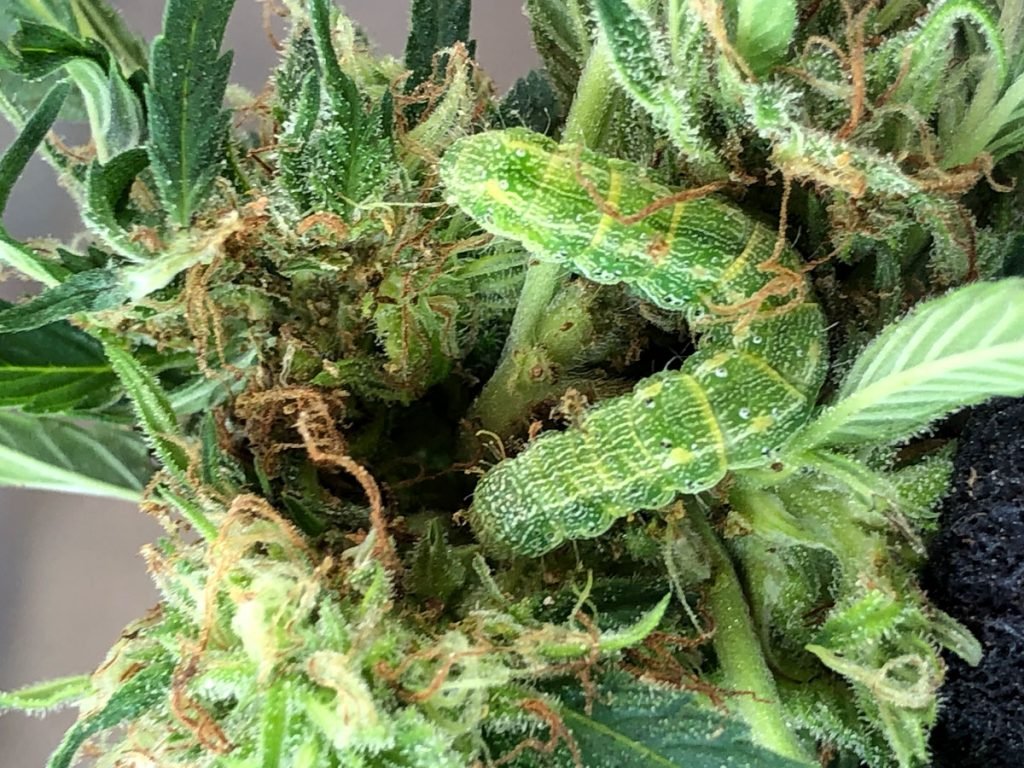
Check out our full Outdoor Grow Guide Here – https://www.cannabisgrowing.com.au/cannabis-grow-guide/outdoor-growing/
Benefits of Indoor
Indoor growers have full control over every aspect of their cultivation environment. They determine the light cycle and watering routine, decide when to initiate growth, and don’t need to concern themselves with factors like strong winds or heavy rainfall.
Enhanced Command
In indoor cultivation, control is king. The capacity to regulate lighting ensures plants receive the ideal amount for robust growth, regardless of weather conditions. Cultivators can also precisely time the induction of flowering in photoperiod strains by adjusting the light cycle to 12 hours on and 12 hours off. Temperature and humidity, critical parameters, are likewise under the grower’s control. Maintaining optimal levels throughout different growth stages promotes healthier plants and reduces the risk of diseases.
Protected Environment
With walls, a ceiling, and a floor, concerns about storms damaging plants or excess moisture causing mold before harvest are non-existent. Regardless of outdoor conditions, growers can visit their plants comfortably at any time.
Enhanced Privacy
Indoor growing offers greater privacy, except in cases of shared living spaces or unexpected landlord visits. If you have a house or apartment to yourself, you’re in the clear! Worries about thieves inspecting your garden or the outdoor crop’s scent permeating the neighborhood are a thing of the past. Although indoor plants can be just as pungent, carbon filters and odor neutralizers swiftly resolve this issue.
Continuous Harvests
Who needs an off-season? While outdoor growers prepare for winter by clearing and mulching their beds in the fall, indoor cultivators are already germinating seeds for the next harvest. Indoor cultivation ensures a constant supply, with no need to watch stash jars run empty. Simply plant another seed as your current crop approaches its end, and enjoy year-round, perpetual harvests.


Disadvantages of Indoor
Appealing, right? All that warmth, shelter, privacy, and control may seem enticing. However, before you embark on setting up a grow tent in your guest room, it’s important to familiarize yourself with the drawbacks of indoor cultivation.
Reduced Microbial Activity
Indoor environments lack the rich microbial life found in outdoor soil. If you’re beginning with bagged compost, you won’t benefit from a well-established soil food web. Building a thriving miniature ecosystem indoors is possible but takes time. Many indoor growers are now seeking ways to replicate outdoor conditions, such as growing companion plants, using cover crops, and introducing worms, beneficial bacteria, and mycorrhizal fungi into the soil.
Higher Costs
Indoor growing involves substantial initial expenses. Essential equipment includes high-quality grow lights, a grow tent, fans, carbon filters, and, in humid climates, a dehumidifier. Additionally, there are ongoing costs, including increased electricity and water bills to maintain your indoor operation.
Sunlight Outperforms Grow Lights
Indoor grow lights excel at nurturing robust and productive cannabis plants. Nevertheless, they lack a crucial element found in sunlight: ultraviolet (UV) radiation. As previously mentioned, UV exposure triggers cannabis to boost resin production as a defense mechanism. While some growers choose lights that emit UVA, which aids in enhancing secondary metabolite production, it’s the inclusion of UVB exposure that truly elevates terpene and cannabinoid levels, providing outdoor plants with a distinct advantage in phytochemical production.
Check out our full Indoor Grow Guide Here – https://www.cannabisgrowing.com.au/cannabis-grow-guide/indoor-set-ups/
Q&A


Is there a Color difference?
Sun-grown cannabis usually looks darker than indoor-grown cannabis. Outdoor green strains are deeper green, sometimes turning brown if not cured well, while indoor ones are brighter green. Purple strains outdoors turn rich purple, while indoors, they stay lighter unless the genetics naturally make them dark.
Another visual indicator is the color at the base of the cannabis flowers. Outdoor-grown buds typically have a light brown hue around the stem at the bottom of the bud (no need to be concerned, it’s not mold). Generally, the small bracts near the bottom of the stem also appear light brown. In contrast, indoor buds remain consistently bright green (or purple) throughout.
Are Cannabinoids different?
Many people wrongly believe that outdoor cannabis is less potent than indoor-grown cannabis, but this is not true. Farmers at Sunna Ra Acres have proven this by conducting tests over several years. They grew the same plant clones outdoors and indoors side by side. The outdoor plants consistently had higher levels of cannabinoids like THC, CBD, and THCv. This experiment shows that sunlight brings out the plant’s true strength and makes it more medicinal.
Are Terpenes affected?
In this case, terpenes, like cannabinoids, get a boost from sunlight. Sunna Ra Acres found that when they grow two identical plants side by side—one outdoors and one indoors—the outdoor plant has more terpenes. Sometimes, the outdoor plants even have terpenes we didn’t know about before. Smoking these two plants tastes and smells different, with the outdoor one being more flavorful and aromatic.
But there’s a catch: terpenes can vanish if they aren’t dried and cured right. Indoor growers are careful with this process because they have more control indoors. On the other hand, new outdoor growers might forget proper drying, and that can make them lose the strong terpene flavors.
Afghan Kush Feminized
10% Sativa, 90% Indica | THC 21% | Afghan Kush is an Indica cannabis strain originating from the renowned Hindu Kush mountain range, which stretches along the Afghan-Pakistan border. It is celebrated for its quintessential indica characteristics, producing large, resinous buds that deliver the classic body stone effect cherished by many users.
——————————————————————————
Is it legal to buy Cannabis seeds in Australia?
How can I buy Cannabis seeds in Australia?
AK-47 Feminized
Ak-47 was orginally created by the Netherland’s Serious Seeds in 1992 and has won 16 awards including the High Times Cannabis Cup. People love this strain around the world for its high THC content, strong flavour and high energy effects.
——————————————————————————
Is it legal to buy Cannabis seeds in Australia?
How can I buy Cannabis seeds in Australia?
Amnesia Haze Feminized
10% Indica – 90% Sativa | THC 21-25% | This is THE legit Dutch classic Sativa dominent powerhouse that is the proud winner of multiple Cannabis cups. This uplifter has a lemony, incense and cederwood flavour. Amnesia has a slightly longer growth phase overall, but this translates into massive yields and is well worth your attention for a truly supreme quality end product that is sure to please those aiming for a happy and uplifting high.
——————————————————————————
Is it legal to buy Cannabis seeds in Australia?
How can I buy Cannabis seeds in Australia?
Amnesia Platinum Feminized
70% Sativa, 30% Indica | THC 16 – 20% | The Original Amnesia Platinum was developed by a Dutch breeder who combined a renowned Haze female with a Northern Lights male. Due to its great success and high demand, the breeder has now released the first Original Amnesia Platinum Feminised seeds. This Sativa variety, which flowers like an Indica, grows rapidly, is highly productive and maintains a manageable height. The plants are extremely potent, boast an exceptionally sweet Haze aroma, and are covered in abundant resin crystals.
——————————————————————————
Is it legal to buy Cannabis seeds in Australia?
How can I buy Cannabis seeds in Australia?
Banana Monkey Feminized Seeds
30% Sativa, 70% Indica | THC 25-28% | Our Banana Monkey has an aroma of ripe bananas and fruity spice when you open the jar and a flavor profile that lives up to its name. Banana Monkey is tranquilizing and a bit of a creeper, as it slowly yet unrelentingly produces a deep whole-body relaxation thanks to the strong Indica influence. You’ll find your mind lifted into a state of happiness that has you feeling free of any bad moods or negative thoughts.
——————————————————————————
Is it legal to buy Cannabis seeds in Australia?
How can I buy Cannabis seeds in Australia?
Blak Domina Feminized
10% Sativa, 90% Indica | THC 20% | Black Domina is an Indica marijuana strain created by combining Northern Lights, Ortega, Hash Plant, and Afghani. This diverse blend produces deeply relaxing and sedative effects. Black Domina is known for its spicy pepper aroma and flavor, making it a popular choice among medical marijuana patients seeking relief from insomnia.
——————————————————————————
Is it legal to buy Cannabis seeds in Australia?
How can I buy Cannabis seeds in Australia?
Blue Cheese
40% Sativa, 60% Indica | THC 19% | Blue Cheese is an Indica strain created by crossing a Blueberry male with a female U.K. Cheese, a phenotype of Skunk #1. This combination results in a unique flavor profile that blends the sweet taste of berries with the savory notes of blue cheese, reminiscent of the original Cheese strain. Blue Cheese’s potent effects are perfect for unwinding after a long day, offering relief from muscle spasms, pain, and stress.
——————————————————————————
Is it legal to buy Cannabis seeds in Australia?
How can I buy Cannabis seeds in Australia?
Blue Dream
70% Sativa, 30% Indica | THC 19% | Blue Dream is a Sativa-dominant hybrid cannabis strain created by crossing Blueberry with Haze. Known for its balanced high, this strain offers both cerebral stimulation and full-body relaxation. With a THC content of 18% and low CBD levels, Blue Dream is popular among both beginners and experienced users. Its flavor profile is reminiscent of sweet berries, both in taste and aroma. Medical marijuana patients frequently choose Blue Dream to alleviate symptoms of depression, chronic pain, and nausea.
——————————————————————————
Is it legal to buy Cannabis seeds in Australia?
How can I buy Cannabis seeds in Australia?
Blueberry Feminized
70% Indica – 10% Sativa – 20% Ruderalis | THC 19-20% | This berry-tasted strain is a cross between Afghani Indica x Highland Thai Sativa x Purple Thai Sativa. This strain promotes calmness and ease and is great for combating anxiety and stress.
How can I buy Cannabis seeds in Australia?
Bruce Banner Feminized
25% Indica – 55% Sativa – 20% Ruderalis | THC 23% | This strain is followed by a cult over the years. It is loved for its distinct earthy, woody flavor with a sweet strawberry undertone. It is great for an energizing, motivational high filled with creativity and warmth. This plant is medium-sized and grows well indoors and outdoors.
——————————————————————————
Is it legal to buy Cannabis seeds in Australia?
How can I buy Cannabis seeds in Australia?
Bubblegum Feminized
80% Indica – 20% Sativa | THC 20 – 27% | This strain has large bubbly buds with a powerful high that offers great emotional and physical relief. This fruitful strain offers flavors of bubblegum, fruits, spices, bitterness, and earthiness.
——————————————————————————
Is it legal to buy Cannabis seeds in Australia?
How can I buy Cannabis seeds in Australia?
Caramel King Feminized
75% Indica – 5% Sativa | THC 20%
This exciting strain converges a cocktail of the top indica strains we all know and love today: Blue Black x Maple Leaf Indica x White Rhino. Auto Caramel King has a sweet flavor and aroma, with notes of caramel.
It is a fast hitter and has a very relaxing body-stoned effect. Brain activity will increase along with a relaxing body effect that isn’t too heavy, still allowing movement and mobility. Making this perfect for a good laugh with your friends at Saturday’s barbecue. Medicinally she is highly valued for her antidepressant and anxiolytic properties.
——————————————————————————
Is it legal to buy Cannabis seeds in Australia?
How can I buy Cannabis seeds in Australia?
CBD Cheese Feminized
60% Indica – 40% Sativa | THC 0.50% | CBD 15 – 17% | This legendary strain has an intense aroma of old cheese and an earthy, mossy taste, with hints of flowers. CBD Cheese delivers a moderately potent and long-lasting high, with a very nice sensation of well-being and happiness. Due to high CBD levels, this strain showcases many anxiolytic and anti-inflammatory properties and is great for medical use.
——————————————————————————
Is it legal to buy Cannabis seeds in Australia?
How can I buy Cannabis seeds in Australia?
CBD Gold Feminized
THC 4 – 6% | CBD 7 -10% | This strain is a medicinal Indica dominant plant that is extremely pleasant and aromatic. It provides a powerful, long-lasting body high that is perfect for relaxing.
——————————————————————————
Is it legal to buy Cannabis seeds in Australia?
How can I buy Cannabis seeds in Australia?
CBD Indica King Feminized
80% Indica – 20% Sativa | THC 0.70 – 0.90% | CBD 20 – 24% | Our CBD Indica King Strain is top-quality and best known for its potent effects and relaxing properties. This unique strain packs the right ratio of a tangy grapefruit flavor with tasty fruit cocktail aromas. When Grown and harvested with care, this CBD flower is packed with beneficial cannabinoids, terpenes, and flavonoids that work together to deliver a truly satisfying relaxing body-stoned, long-lasting experience.
——————————————————————————
Is it legal to buy Cannabis seeds in Australia?
How can I buy Cannabis seeds in Australia?
CBD White Widow Feminized
THC 4 – 6% | CBD 7 -10% | This strain is a medicinal Indica dominant plant that is extremely pleasant and aromatic. It provides a powerful, long-lasting body high that is perfect for relaxing.
——————————————————————————
Is it legal to buy Cannabis seeds in Australia?
How can I buy Cannabis seeds in Australia?
Cheese Feminized
20% Sativa, 80% Indica | THC 18-20% | Cheese is a renowned strain that originated in the United Kingdom. It is a unique female phenotype of Skunk #1, which is a hybrid of Afghani (indica), Acapulco Gold (sativa), and Columbian Gold (sativa). This strain preserves the uplifting effects of a sativa, making it popular among those dealing with stress and anxiety. Its potent body relaxation helps alleviate chronic pain and is beneficial for treating insomnia. Additionally, Cheese is frequently used to stimulate appetite.
——————————————————————————
Is it legal to buy Cannabis seeds in Australia?
How can I buy Cannabis seeds in Australia?
Chronical Feminized
60% Sativa, 40% Indica | THC 19-25% | This strain is known for its impressive yields, thanks to its robust hybrid genetics—a blend of Northern Lights, Skunk x Northern Lights, and AK-47. With a medium height and a less branchy structure, it’s not ideal for topping or super cropping. However, it excels in a Sea of Green setup, allowing growers to concentrate on the main colas and maximize plant density in limited space. Chronical delivers astonishing yields, but proper curing is essential to preserve its delightful sweet aroma.
——————————————————————————
Is it legal to buy Cannabis seeds in Australia?
How can I buy Cannabis seeds in Australia?
Cocopopo Feminized
5% Indica – 75% Sativa – 20% Ruderalis | THC 20 – 25% | This exciting genetic combination is birthed from O.G. Chocolate x Cannalope Haze. It is easy to grow and takes less effort to maintain than other strains. Enjoy the sweet, bitter chocolate taste with Cocopopo.
——————————————————————————
Is it legal to buy Cannabis seeds in Australia?
How can I buy Cannabis seeds in Australia?
Coffee Rocket Feminized
70% Sativa, 30% Indica | THC 25-28% | Coffee Rocket has an earthy, yet sweet flavor and a nice citrusy aroma with a hint of grape. It has high THC. The wonderful Coffee Rocket strain has rapid effects but will provide nice relaxation of the muscles and creative energy along with slight euphoria. Coffee Rocket is versatile and can be smoked day or night.
——————————————————————————
Is it legal to buy Cannabis seeds in Australia?
How can I buy Cannabis seeds in Australia?
Dosidos Rocketos Feminized
30% Sativa, 70% Indica | THC 26 – 32% | Introducing your new green companion! This Indica-dominant strain is packed with THC and boasts an incredible taste and aroma. It’s versatile, thriving indoors with the Screen of Green technique or Super Cropping, and flourishing outdoors in sunlight. Plus, it’s resilient enough to withstand colder climates. Enjoy legendary potency and unique effects with this exceptional all-round variety!
——————————————————————————
Is it legal to buy Cannabis seeds in Australia?
How can I buy Cannabis seeds in Australia?
Dubai Poison Feminized
100% Sativa | THC 8-20% Dubai Poison has a really complex flavor and aroma, with notes of lemon and spices. The effect it provides is potent, clear, and cerebral. This legendary strain has gained popularity worldwide for it’s energetic, uplifting effects. Durban is the perfect strain to help you stay productive through a busy day when exploring the outdoors, or to help you get creative.
——————————————————————————
Is it legal to buy Cannabis seeds in Australia?
How can I buy Cannabis seeds in Australia?
Early Top Skunk Feminized
35% Sativa, 65% Indica | THC 15 – 20% | Feminised Early Top Skunk seeds combine Skunk #1 and Early Pearl, creating hardy outdoor plants with dense, resin-coated buds. Early Pearl makes these plants mold-resistant and triggers early flowering from late July to late September. Skunk #1 ensures a high-quality yield. Ideal for all growers, this strain is reliable, easy to grow, and consistently produces top-grade cannabis.
——————————————————————————
Is it legal to buy Cannabis seeds in Australia?
How can I buy Cannabis seeds in Australia?
Euforia Special Feminized
30% Sativa | 70% Indica | THC 18 – 20% | Euforia Special blooms with heavy flowers on long branches with short internodes. During the vegetative stage, some plants may resemble Haze varieties, but their Indica traits become prominent once flowering begins. The plants are robust and have earned a lasting reputation among dedicated growers worldwide.
——————————————————————————
Is it legal to buy Cannabis seeds in Australia?
How can I buy Cannabis seeds in Australia?
Gelato Feminized
70% Indica – 30% Sativa | THC 21-27% | This strain is an absoluate corker! One of the nicests strains going around in our opinion and very under rated. Super strong, Very crystally large(ish) buds with very big yields. It’s fairly straight forward to grow and super strong.
——————————————————————————
Is it legal to buy Cannabis seeds in Australia?
How can I buy Cannabis seeds in Australia?
Godfather OG Feminized
40% Sativa | 60% Indica | THC 19% | Godfather OG, also known as “Godfather,” “The Don of All OG’s,” and “OG Godfather,” is a powerful indica strain created by crossing XXX OG and Alpha OG. This strain delivers sedating and relaxing effects, making it ideal for medical marijuana patients seeking relief from insomnia and pain.
Flavor Profile Godfather OG has a spicy and kushy flavor with subtle grape undertones.
THC Levels and Usage With high THC levels around 28%, consumers with low THC tolerance should only use Godfather OG in small doses.
——————————————————————————
Is it legal to buy Cannabis seeds in Australia?
How can I buy Cannabis seeds in Australia?
Gorilla Glue Feminized
50% Indica – 50% Sativa | THC 20-26% | One of the strongest cannabis strains available this one is recommended for the serious marijuana consumer! This popular strain has also won several cannabis awards like the Michigan and Los Angeles Cannabis Cups in 2014, and the High Times Jamaican World Cup.
——————————————————————————
Is it legal to buy Cannabis seeds in Australia?
How can I buy Cannabis seeds in Australia?
Granddaddy Purple Feminized
25% Sativa | 75% Indica | THC 17% | Granddaddy Purple, also known as “Grand Daddy Purp,” “Granddaddy Purps,” “GDP,” and “Grandaddy Purple Kush,” is an indica strain popularized in 2003 by Ken Estes. A cross of Mendo Purps, Skunk, and Afghanistan, it boasts a complex grape and berry aroma from its Mendo Purps and Afghanistan parents and a compact bud structure from Skunk. Its deep purple flowers are coated in white crystal resin. GDP delivers strong mind and body effects, combining cerebral euphoria with physical relaxation. It’s often used to relieve pain, stress, insomnia, appetite loss, and muscle spasms. GDP yields large harvests, ready in about 60 days indoors.
——————————————————————————
Is it legal to buy Cannabis seeds in Australia?
How can I buy Cannabis seeds in Australia?
Grapefruit Feminized
20% Indica – 80% Sativa | THC 16-20%
The Vancouver, Canada staple…. This 80% Sativa strain has a sweet and fruity aroma similar to the smell of ripe grapefruit It’s an 80’s old secret mix of Cinderalla 99 with a mystical grapefruit flavoured Sativa.
With the smell of pineapple and grapefuit this has an uplifting & stimulating high good for focus, creativity and pleasure.
——————————————————————————
Is it legal to buy Cannabis seeds in Australia?
How can I buy Cannabis seeds in Australia?
Green Candy Feminized
40% Indica – 60% Sativa | THC 20-24% | Green Candy has an intensely fruity aroma and flavor, with notes of mango, pineapple, exotic wood, and incense. The effect is stimulating, focused, and energizing, providing a cerebrally powerful Sativa-like high. Only a few puffs of this potent beauty will allow your stress and anxiety to melt away along with waves of euphoria.
Is it legal to buy Cannabis seeds in Australia?
How can I buy Cannabis seeds in Australia?

About the Author
Our deep love of plants and fascination with Cannabis has enabled over 25 years of successful small scale Marijuana cultivation from indoor hydroponics, greenhouses and outdoor growing set-ups.
As Cannabis laws around the world change, *we support the movement toward freedom of choice for responsible, consenting adults who wish to experience the joy and wonder of growing a Cannabis plant.


